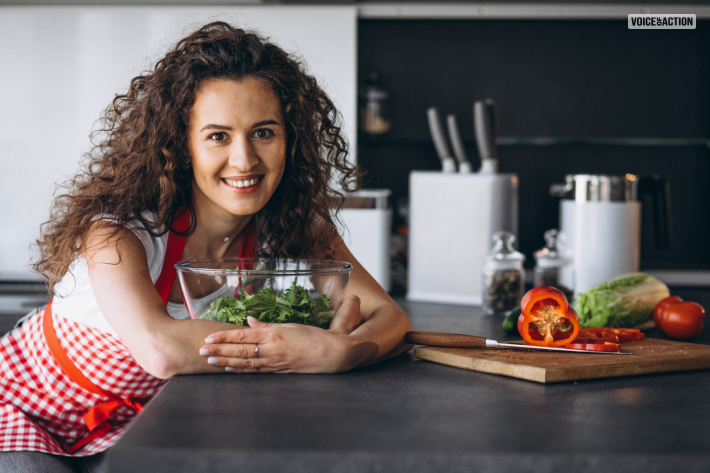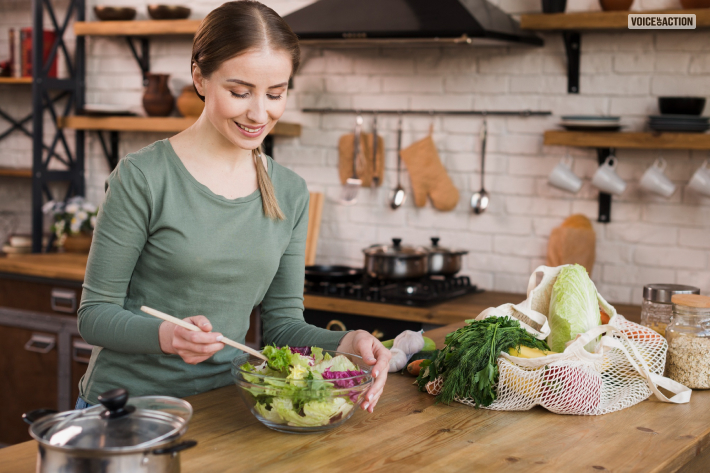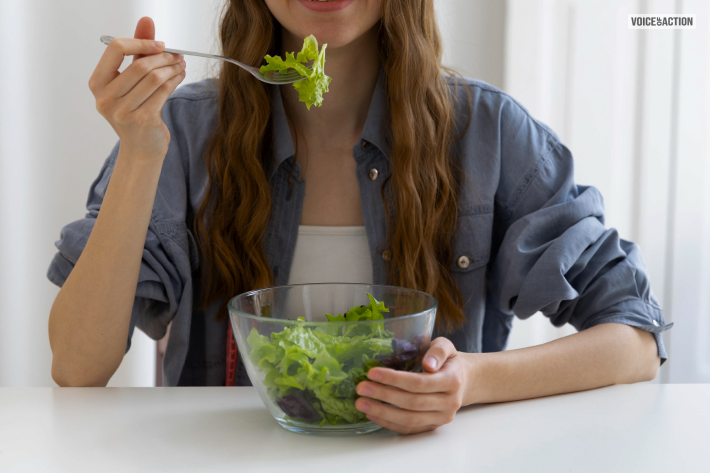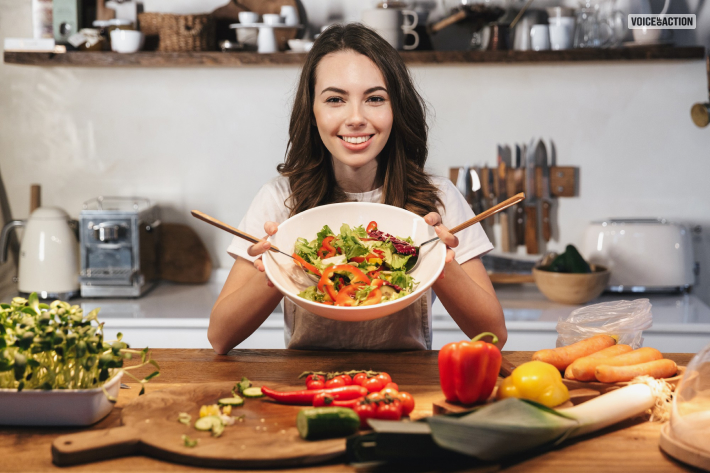How To Become A Vegan – An Ultimate Guide To Your Vegan Transformation

Are you ready to embark on a life-changing journey towards a healthier and more compassionate lifestyle? Look no further than our guide to a vegan transformation. The ultimate guide to how to become a vegan.
Whether your motivation comes from improving your well-being, reducing harm to animals, or addressing environmental concerns, this blog post is your ultimate resource for making the change seamless.
Get ready to unlock the secrets of plant-based living as we navigate every obstacle with realistic tips, satisfying recipes, and inspiring success stories. Brace yourself for an exciting adventure of how to start a vegan diet that will leave you nourished, energized, and passionate about the incredible transformation awaiting you!
Why Become A Vegan

Yes, we understand it is a big life change. Something that will require not only perseverance but also determination.
The determination in our life generally comes from what we are getting out of putting in an effort. Therefore, before we get into the guide to how to become a vegan, let’s give you a data-driven account of why being a vegan is better.
Did you know a plant-based diet can decrease 75% of greenhouse gas emissions? Therefore, your personal carbon footprint is less than less than someone eating 3.5 ounces (about 103.51 ml) of meat every day.
Oxford research shows that if someone cuts their meat consumption from 3.5 ounces (about 103.51 ml) to 1.7 percent, it is like 8 million cars less on the roads.
Being a vegan diet advocate also means you are supporting 75% less land use and 54% less water use.
The total carbon footprint for someone who consumes meat every day is 22.5 pounds. On the other hand, for someone who eats fish, every account accounts for 10.4% of carbon compounds.
Therefore, your own personal choice is not so personal anymore.
Health Benefits Of Being Vegan

For someone coming to this page, you already have one thing in mind!
Being kind to animals and contributing to stopping meat consumption.
However, did you know that you could also have health benefits from being vegan?
To begin with, your weight loss journey will be much easier. Now that you will be putting good fat and protein in you without the cholesterol-inducing parts.
Talking about less cholesterol, with less red meat, your chances of having cardiac issues also decrease.
Say hello to good skin!
Welcome a new and renewed vegan weight loss!
How To Become a Vegan (…& Not Give Up)
This commences your journey towards becoming a vegan. We will walk you through the guide and give suggestions on not giving up.
Know What You Are Cutting Off

When you are trying to become a vegan, you must know what you are getting into. This means the moral, good, bad, and ugly. For example, did you know to be a completely strict vegan, you would have to give up honey? Although honey originally comes from the nectar of the flower, which later bees turn into honey, it is still an animal product by some vegan protocols.
Being 100% vegan means you cannot have loopholes in consuming animal products, especially if you are trying to be vegan for moral reasons.
Yes, being vegan doesn’t stop the torment animals go through. Whether artificial growth injections are too painful or animal testing is a safety measure for products. However, a small step from man is indeed a giant step for mankind.
Afterall, if you are feeling helpless trying to be an animal activist, being vegan is your way to take control.
Why I am telling you to know what you are getting into is to build that determination. For example, when you miss certain food products, it’s easy to slip back into your old habits. Getting carried away is inevitable. Thus, you should know how to deal with the negative and then embrace the good parts.
Know How to Read Labels Like a Vegan

The same as with any other major lifestyle change, you need to educate yourself on what makes a vegan die, especially which foods can replace animal products.
Read books, watch documentaries, or go to plant-based nutrition workshops for more information. That’s going to give you an insight into how to achieve your nutritional requirements without taking any animal products into your diet.
As for traveling through veganism, reading the vegan tag is the key. These small but tough-to-crack pieces of information are the one thing that can open a door to a completely different world. A world that is not based on any animal product whatsoever but is purely plant-based.
All right, then, let’s get down to analyzing all those fascinating labels, shall we? The first thing to look out for is (keyword)! This navigating word becomes your beacon, leading the way into the ocean of endless food choices.
Whether stating “certified vegan“ as a proud declaration or featuring a distinctive symbol like the Vegan Society’s – spotting these keywords guarantees you are headed in the right direction toward ethical eating. Find out what percent of Americans are vegan, to get your new boost of motivation.
What if there’s no explicit mention?
Fear not! Sometimes, manufacturers employ different phrases that hint at being animal-free: “plant-based,” “cruelty-free,” or even “free from animal derivatives.”
Therefore, watch out for these subtle signs and enjoy this thrilling journey that we are going on; let’s decode those ingredients in the next lesson.
Know Your Alternatives

Are your options limited when you switch to vegan?
Does it?
This is one of the biggest myths that we hear when we talk about a vegan diet.
Although you might face a few issues in terms of identifying what to eat and how to get a balanced diet in the beginning, there are options!
A good way to know how to become a vegan is to start cooking your own meal. This is your sign to start cultivating your culinary skills. Meal prepping and assembling won’t be a task if you know how to start a vegan diet. There are a few basic elements that you need to keep in mind.
Vegetables: You cannot have a vegan diet without vegetables. Therefore, research all kinds of veggies and legumes that you can incorporate into your diet.
Fruits: Fruits are another source of nutrition that is a staple in a vegan diet.
Protein alternatives: Every vegan diet should have protein like tofu, soya, and lentils in their everyday diet. Especially if you are trying to find a vegan diet for building muscles.
Nuts: A source of good protein, and Omega 6 is nuts. You will certainly go nuts due to lack of energy if your vegan diet doesn’t comprise nuts!
Dairy Alternatives: Coffee and tea are a staple in most diets. Plus, they are also a source of mental stimulants. However, not everyone is accustomed to having black tea and coffee. Therefore, having the right milk substitute is crucial. The common ones that don’t compromise on taste and are also nutritious are vanilla, oat, and soy milk substitutes.
Take Your Time
You cannot ask how to become vegan today and then jump into becoming 100% vegan the day after. This will not only overwhelm you, but you would want to give up every day.
If you have made a New Year resolution to become vegan by the end of 2024, you do not have to cut off everything from the very beginning.
Yes, I understand the moral purpose behind it. However, you also must be easy on yourself if you really want to love this lifestyle change in the long run. Or, else, it will all look quite forced.
Start with meatless Mondays, or just meat Mondays, where you only eat any animal product every Monday.
Begin cutting down on animal products that you do not enjoy much at first. This could include milk products or red meat.
Assessing Your Current Eating Habits

Before going ahead with drastic dietary changes, be sure to know what you eat now. This step might seem simple, but it can be a key element in changing your diet plan. Through understanding your current eating habits, you will be able to recognize areas for improvement and make better choices on what changes are needed.
- Keeping a Food Diary: One of the best methods of appreciating food decisions is by keeping a food diary for at least one week. Record everything you eat and drink, including meals, snacks, and beverages. Be honest with yourself to include portion sizes as well. A food diary will help you pick up on trends pertaining to your eating habits and draw attention to places that need improvement.
- Identifying Nutrient Deficiencies: When you review your diet, see if there is any nutrient shortage visible. A plant-based diet can be complete in all its nutrients as long as it is well-planned. However, for some nutrients such as iron, calcium, and vitamin B12, special consideration may be needed for those who transition from an animal-based diet.
- Evaluating Food Preferences: When transitioning to veganism or any new lifestyle generally, it is still important to enjoy the foods we eat wholeheartedly. Keep track of the plant-based meals or ingredients that most interest you during this assessment.
- Enlisting Professional Help: If you are overwhelmed by the idea of assessing your eating habits or think it is complex, don’t hesitate to consult dietitians who specialize in plant-based nutrition.
Exploring Plant-Based Protein Sources

Probably the biggest worry for people asking how to become a vegan is the lack of enough protein. Nevertheless, you can find a lot of healthy and nutritious plant-based protein sources that are quite enough to get your daily protein amount.
- Legumes: Beans, lentils, and peas are excellent sources of protein, providing about 15 grams per cup. They are also rich in fiber and complex carbs, which give them a filling effect and give you sustained energy throughout the day. Ways to include legumes in your diet include soups or stews made of beans or lentils, salad or stir-fry topped with cooked chickpeas, or black beans as toppings for tacos or burrito bowls.
- Soy Products: Tofu, tempeh, edamame, and soy milk are all soybean-derived protein sources of plant origin. Tofu and tempeh can act as replacements for meat in many dishes, including stir-fries and sandwiches. Plus, edamame can be a healthy snack alternative or salad addition. Soy milk makes an excellent substitute for cow’s milk, and it can be used in shakes or poured over cereal.
- Nuts and Seeds:Nuts like almonds, cashews, walnuts, peanuts, pumpkin seeds, and chia seeds provide a good quantity of protein along with healthy fat. They are ideal additions to oatmeal bowls or can be sprinkled on top of salads for some crunch.
- Fruits and Vegetables: Fruits and vegetables do contain a small amount of protein. These four vegetables –broccoli, spinach, Brussels sprouts, and asparagus contain about 5 grams of plant-based protein. They also give you a supply of essential vitamins and minerals, which makes your diet complete.
- Quinoa: This pseudo-grain is an incredible source of protein as it contains all nine essential amino acids the body needs for good health. It is also gluten-free and quite flexible in cooking, which makes it a choice for vegans. Quinoa is a versatile ingredient that can be used in recipes, including salads and stir-fries, and even as a substitute for rice.
Finding Delicious and Nutritious Vegan Recipes

Vegans have the greatest difficulty locating scrumptious and healthy recipes. Fortunately, there are an abundance of vegan recipes online and in cookbooks that can make your cooking experience a breeze while you exclude animal products.
One should become acquainted with the standard plant-based pantry ingredients like lentils, beans, quinoa, tofu, nuts and seeds, whole grains, and fruits and vegetables. These ingredients are quite versatile and can be used to make many different dishes, including soups and stews, salads, and stir-fry.
Then, look for food blogs or websites about vegan cooking. Many times, these platforms have user-friendly search filters that allow you to enter your dietary preferences or ingredients that you already have on hand. You can also find useful tips on how to create delicious meals that don’t require meat or dairy products.
Another good source to search for vegan recipes is social media. Notably, Instagram has emerged as a go-to place to upload food photos with the recipe details included in the captions or links provided in the bio area. Through vlogging, calling famous vegan influencers, or using tags like #veganrecipes only or #plantbasedmeals, you will have a great deal of inspiration to prepare your own meals.
Besides the Internet, don’t forget traditional cookbooks as well. Plant-based dishes are becoming more and more popular in the collections of the top chefs, which makes preparing restaurant-quality vegan dishes easy.
Look at new recipes when browsing through them. By trying out different flavor combinations and styles of cooking, you will keep your meal engaging and expand your culinary skills. It’s not a problem to change existing recipes by replacing the non-vegan ingredients with alternatives like chickpea liquid instead of egg whites and cashew cream instead of heavy cream. Also, find out the unique ways what are vegan eggs are made.
Hopefully, we were able to give you some solutions to how to become a vegan. How long have you been vegan? Are you handling it like a pro? Please let us know in the comment section below.
More Resources:


























